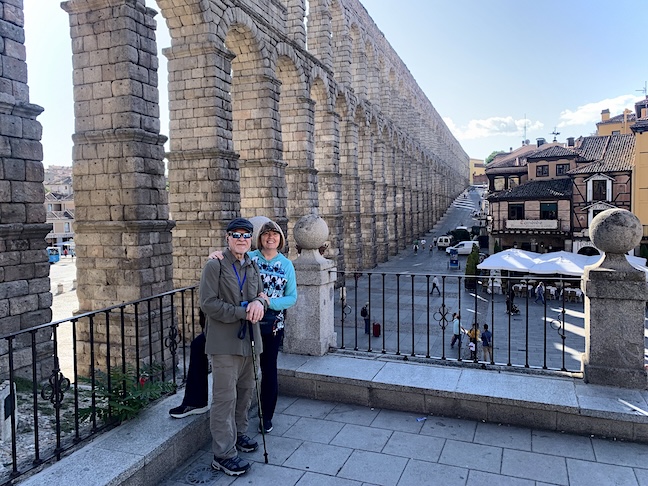
After a fifty-mile day trip by bus from our current home base in Madrid, Segovia greets us with its 2,000-year-old Roman aqueduct. Vehicle traffic was allowed to pass through the 100-foot high arches until it was discovered that the rumble was disturbing its 24,000 granite blocks assembled without mortar.
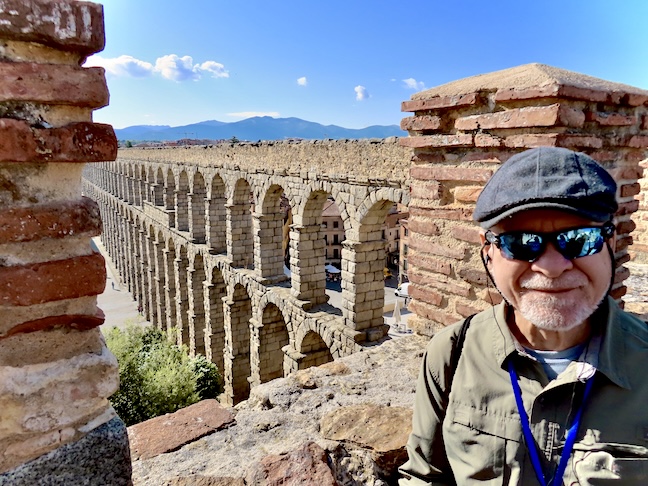
Roman Emperor Trajan had the 10-mile-long aqueduct built to channel water to the 50,000 inhabitants from the Rio Frio River. Much of the aqueduct is underground except for this 2,500-foot-long stretch with 167 double-stacked arches. The engineering feat still carries water to its terminus under the Alcázar.

Our local guide and Segovia resident Leticia told us the water is first collected in El Caserón, or the Big House tank in the mountains 10 miles away. Next, sand and sediments naturally settle out in a second Waterhouse before running on a one-percent grade to the rocky outcropping where the ancient city of Segóbriga was built. Modern Segovia still has about 50,000 people.
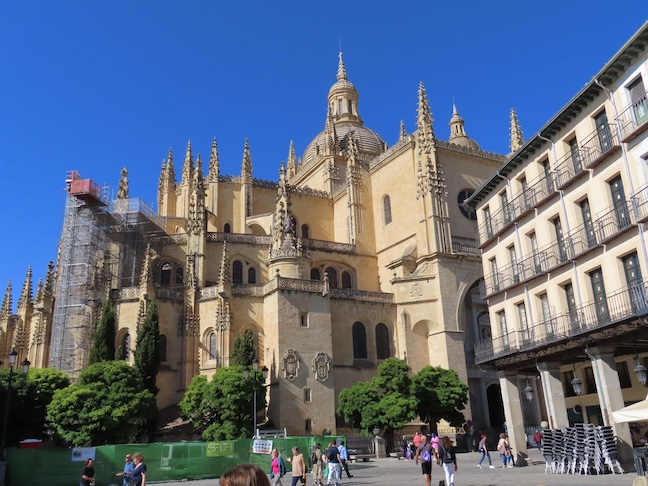
We trudge up the steep steps by the aqueduct to the top of the crest and walk across town on the Calle Real or The Royal Street to the Gotthic-style Segovia Cathedral built from 1525 through 1708.
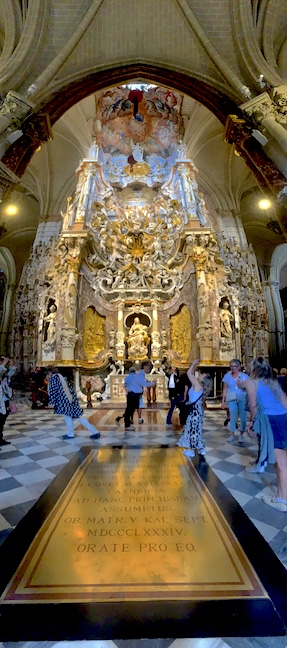
The cathedral’s main nave is 352 feet long, 168 feet wide, and rises to 110.5 feet high. The main altarpiece was designed by Italian architect Francisco de Sabatini.
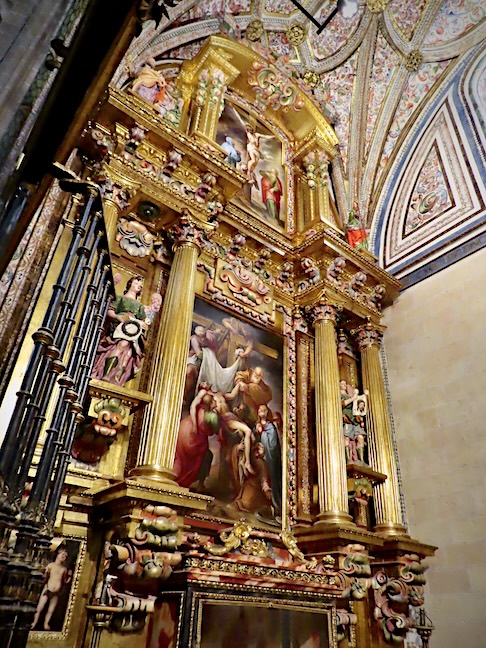
The cathedral has 18 side chapels enclosed by barred and gated entries, which were owned by rich families who used them for private Masses and their burial spots close to the gilded alters.

The cathedral’s cloister was surrounded by fine art, with rooms off to the sides that held a museum with paintings and silver reliquaries and a gold-covered chapter room with Flemish tapestries. The peaceful courtyard provides a view of the Renaissance tower.
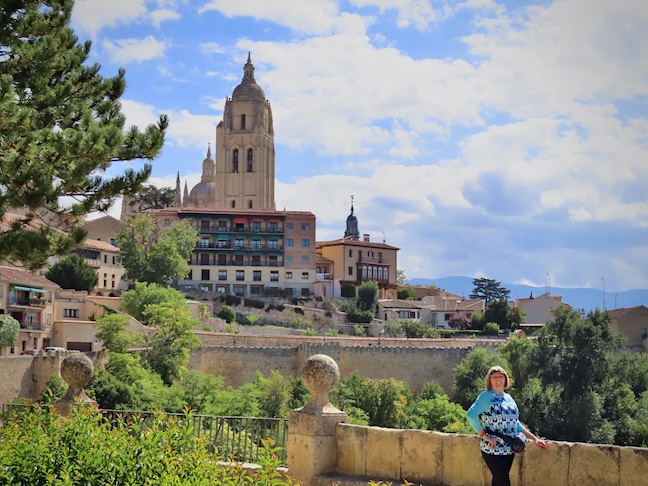
The medieval wall that surrounds the wedge-shaped city is 30 feet tall and 7,380 feet long.
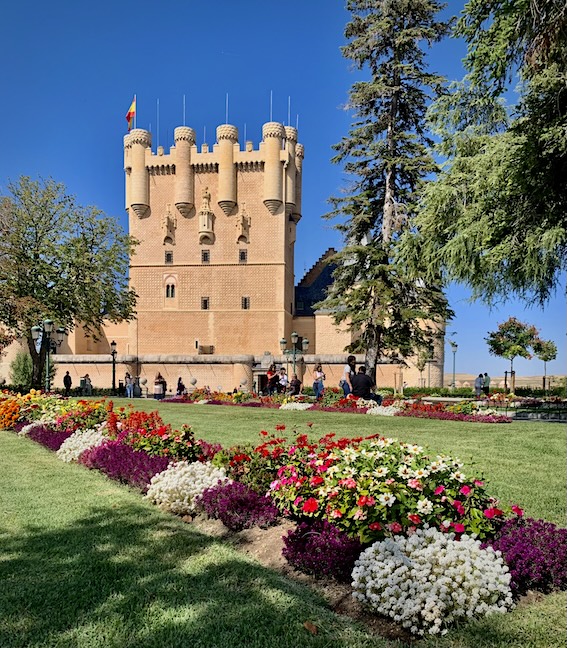
Segovia is often described as ship-shaped, with the viaduct at the wide stern and the castle on the pointed bow. A fortified palace or Alcázar has stood on this site since 1100 and served as the key fortress controlling the region. It not only housed royals, but it also served as a prison for 200 years and a royal artillery school.
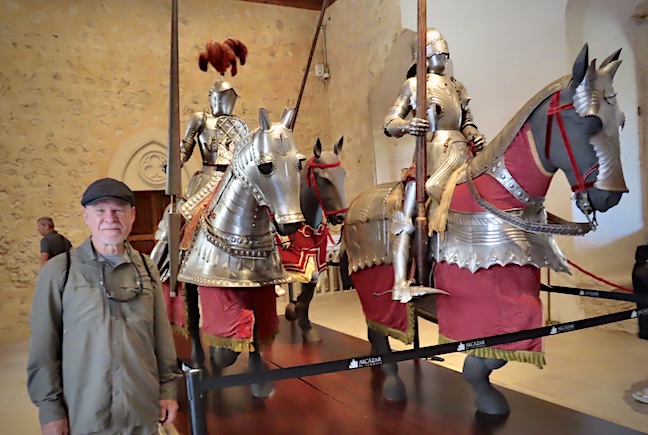
Inside the fortress are displays of armor and ancient weaponry.
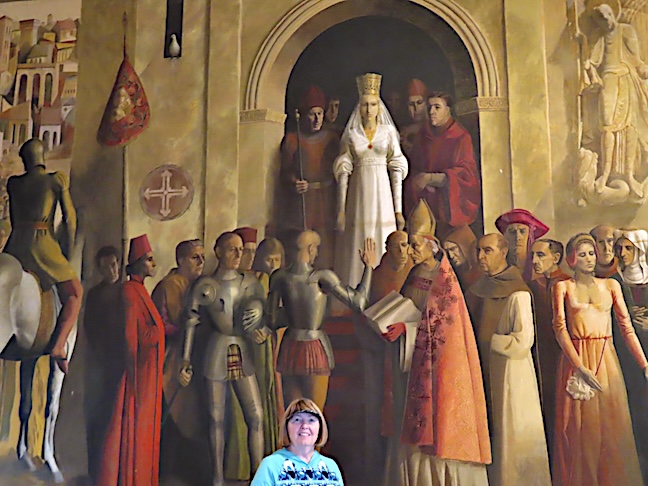
The painting depicts the coronation of Isabella the Catholic as the Queen of Castile, Aragon, and León from 1474 until her death in 1504. Isabella helped pay for four of Christopher Columbus’ trips to the Americas.
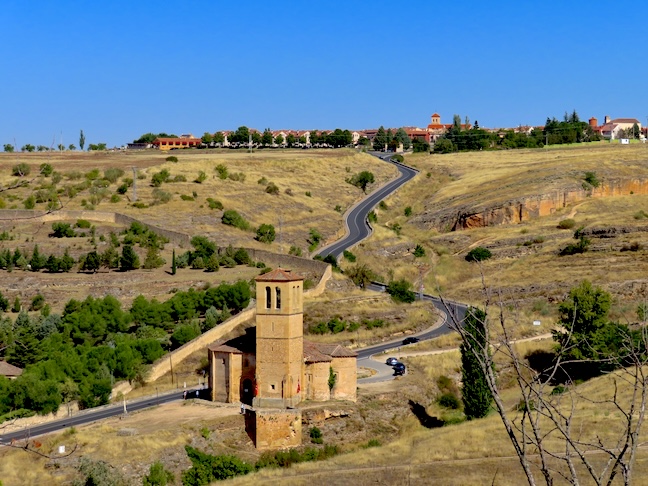
The castle stands on a high precipice giving it this commanding view, and an advantage over all adversaries. It is surrounded by a natural deep gorge that was hand-carved deeper to form an impenetrable moat. The rock slabs quarried from the gorge were used to build the Alcázar’s tower.
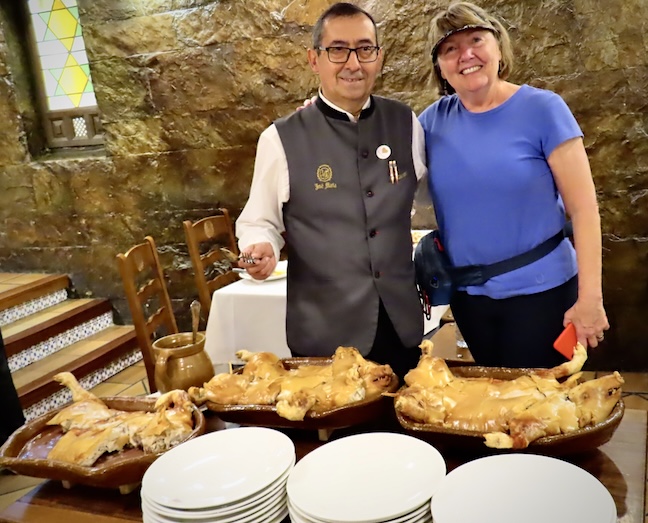
For lunch, we were treated to roast suckling pig at Restaurante José Maria. Our guide informed us, “You can never be truly Spanish until you eat suckling pig.”
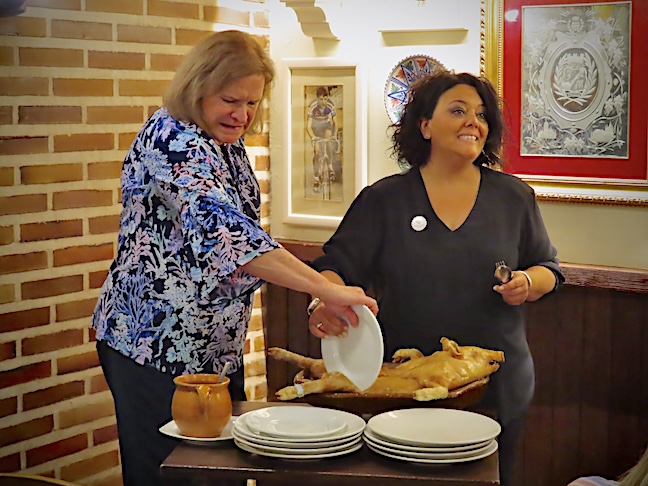
José’s daughter, Rocio Ruiz, heads up the 100-member staff and explains how the venerable restaurant raises its own suckling pigs and baked them in traditional ovens until the skin is crispy and the meat so tender you could cut it with the edge of a serving plate.
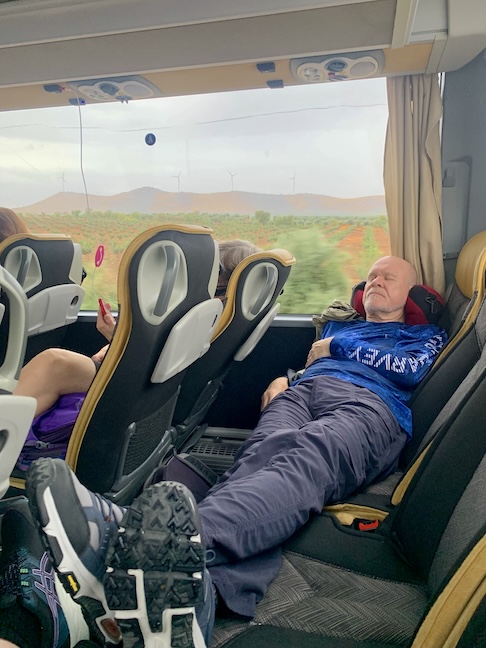
I took a little snooze in the back of our luxury bus on the hour-long return ride to Madrid. Our bus seated 52, and we only had 29 in our group. Lots of room for everyone.
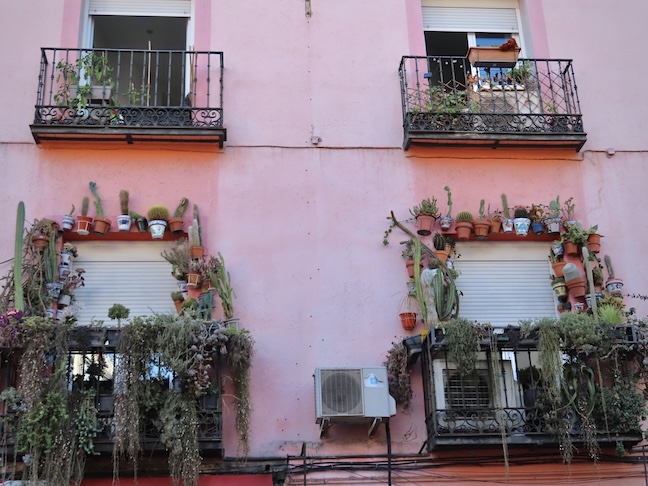
Back in Madrid, we walked around to work off our suckling pig dinner. Spaniards love their balconies, and no matter how small they are, decorating with potted plants is a must.
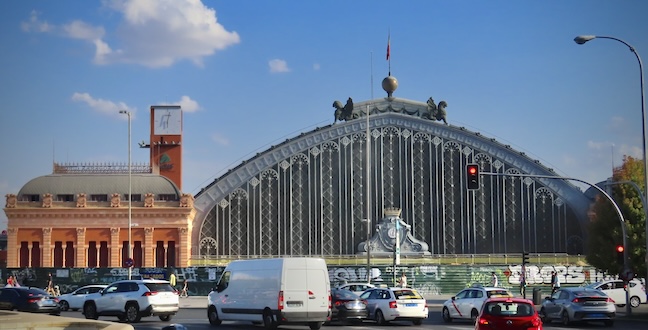
The Madrid Atocha Train Station was inaugurated in 1851 and enlarged in 1984. Spain’s largest train station serves over 100 million passengers per year. We will return to Madrid by train at the end of our trip.
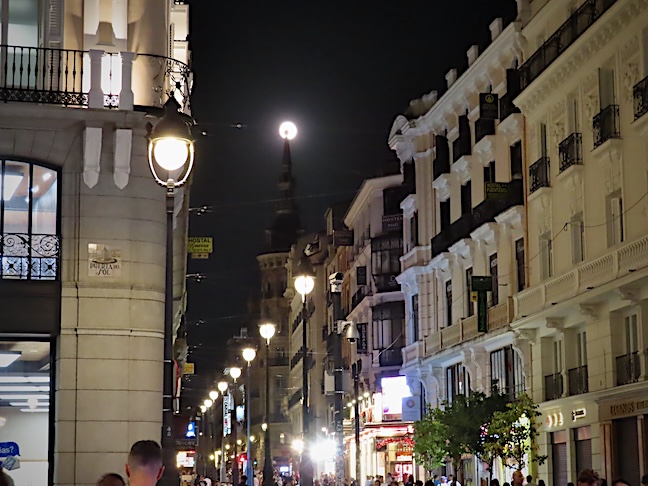
Madrid has a vibrant nightlife. The full moon added to the charm and energy the city exudes.

The Tio Pepe sign on the building across from our hotel is our beacon for returning to our room. The iconic billboard first appeared in 1936 and became one of the city’s most beloved symbols. A 2009 ordinance banning neon signs in Puerta Del Sol plaza caused the sign’s removal in 2011. Fifty thousand signatures were gathered on a petition to save the sign, and it was refurbished and relocated on this rooftop. The sign advertises Tio Pep sherry. It’s slogan says, “Andalusian sun in a bottle!” Goodnight, Tio Pepe.

